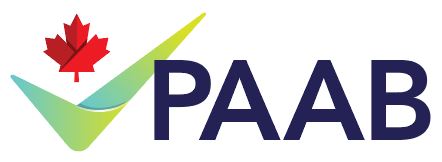Claims & Support/References for Claims
249
Topics
422
Posts
The responses, guidance, and advisories provided by the Pharmaceutical Advertising Advisory Board (PAAB),
including but not limited to those available through the PAAB Forum, the PAAB website, and any PAAB
correspondences, are specifically intended to assist individuals navigating the PAAB preclearance system.
Repurposing or reproducing this content without written consent from the PAAB Commissioner is strictly
prohibited. This prohibition includes, but is not limited to, use in machine learning or AI models.
-
-
-
-
689 - Non branded APS I just read the following Ask PAAB questions and I require clarification: Are we required to send material on disease awareness to the PAAB, even if there is no product mention? Hide Answer [-] PAAB Code section covers editorial pieces generated by a pharmaceutical company. That means the piece would not exist without the pharma company's financial involvement. The PAAB reviews editorial pieces where healthcare products are mentioned. See Code s7.8. Therefore, if you are talking about mechanism of action of how a ...
-
-
-
677 - We have a situation where previously-approved clinical data in our TMA has been removed. This was an editorial request from Health Canada, simply to make room for new content (as Health Canada often requests trade-offs in order to keep TMAs succinct). It does not reflect a change in approval of the data itself. Therefore, can you advise if this previously-approved TMA data can continue to be used in APS? Note, the data does not appear in published studies and is therefore considered Data on File.
-
674 - Is it acceptable to compare the clinical trial inclusion/exclusion criteria among competitor products? We would like to make the point that patients with certain conditions were included in the trials for 1 product but not in trials for its competitors. I understand non-clinical information can be compared across products, and we wondered if inclusion/exclusion info was considered clinical or non-clinical. Could this be done in a branded context?
-
671 - It seems that materials that cite a product is available through the Special Access Program would be considered promotional. Are these types of materials reviewed and approved by PAAB, or are they strictly prohibited as alluded to in the Health Canada Guidance regarding special access programs? Without some notice, I don’t know how healthcare professionals know whether a product is available through SAP.
-
-
665 - We would like to produce a non-branded APS that highlights the current medical practice on using a specific class of medication. The most recent Canadian consensus guidelines (updated in 2017) support the message that this class of medication should now be offered as an option to patients undergoing continued maintenance treatment (this is a big change vs the last consensus guidelines publication from 2003). 2 Questions: 1) We assume it would be acceptable to make a claim in an APS that outlines this recommendation, given that this is from an approved, authoritative source, correct? 2) This guideline document also provides context around why their position has changed. They provide details about how this class of medication was used historically, and also outline some of the evidence that supports their new recommendation...
-
-
-
-
-
644 - Hi, I wanted some clarity on the rule below. Essentially, we are allowed to use peer reviewed resources, etc. to support claims, as long as the claim made references a clinical endpoint already captured in our monograph? Specifically, if my label mentioned confirmed disability worsening, but I also have long term data that discusses confirmed disability improvement (diff metric), I would not be allowed to use this? -- 3.2.2 Literature used to support claims contained in the APS must be consistent with the indications, dosage regimens, and efficacy and safety information contained in the Health Canada TMA.
-
638 - Would the use of a publication for a clinical trial evaluating two different head-to-head treatment comparisons be allowed in promotional materials if only one of the head-to-head comparisons is in alignment with the TMA? More specifically: •The comparison of Product A versus Product B is in alignment with the TMA for Product A i.e, a comparison versus another product in the same therapeutic class as Product B is included in the TMA; the primary endpoint in the publication is the same as a secondary endpoint included in the TMA for a pivotal study; same patient population. •The comparison of Product A versus Product C is not in alignment with the TMA indication for Product A. •Would the comparison of Product A versus Product B be allowed in promotional materials for Product A?
-
-
-
626 - We have an ongoing pivotal study and would like to report the latest published data. While the data exceeds the duration of that mentioned in the TMA, it is directionally-consistent with respect to magnitude/significance, and no additional safety concerns were identified. Can we report this data in APS, if there is no emphasis placed on the duration?
